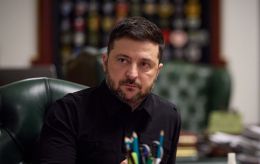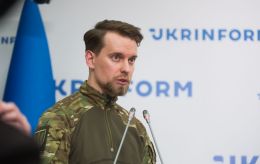Syrskyi's approach: Ukraine addressing frontline sore points and looming war outcome in summer
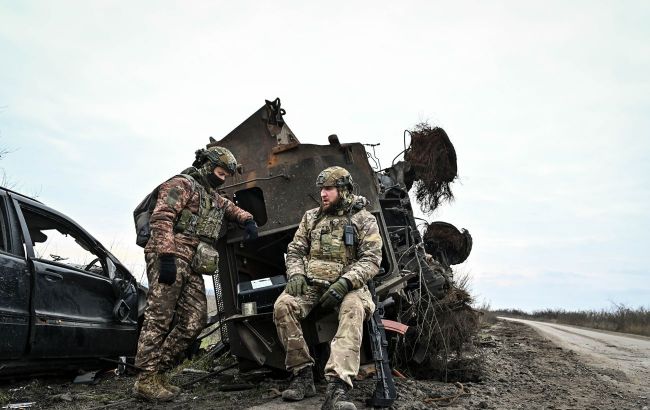 The Ukrainian military managed to halt the Russian advance, but this may be a temporary pause (Photo: Getty Images)
The Ukrainian military managed to halt the Russian advance, but this may be a temporary pause (Photo: Getty Images)
The Ukrainian troops managed to stabilize the front, which is one of the main achievements in recent weeks. Meanwhile, Western analysts warn of the threat of a Russian breakthrough, while diplomats suggest that the outcome of the war may be decided in the spring or summer.
More details about the situation on the frontlines, priorities, problem areas, and what the success of the Ukrainian defense depends on can be found in the material by RBC-Ukraine.
The material draws on analysis from the Institute for the Study of War (ISW) and the Ukrainian DeepState project, as well as statements from the Telegram channel of the Commander-in-Chief of the Armed Forces of Ukraine, Oleksandr Syrskyi, remarks by EU foreign policy chief Josep Borrell, and comments from experts Vladyslav Seleznov and Oleksii Hetman.
Content
- Agenda of Syrskyi: rotation at the frontline, drones, and EW systems take precedence
- What's happening on the front and where the sore spots might be
- Ammunition shortage poses risks. Is there a threat of a Russian breakthrough?
- Will the outcome of the war be decided in spring and summer? What to expect in the coming months
- How will the raid by the Russian Volunteer Corps and other groups end, and will Russia deploy troops to Belgorod?
Agenda of Syrskyi: rotation at the frontline, drones, and EW systems take precedence
The situation on the frontlines is challenging but under control. It's relatively stable compared to the fierce battles when Ukrainian forces had to retreat from Avdiivka under pressure from the occupiers, who also managed to capture several villages west of the city. This week, the Commander-in-Chief of the Armed Forces of Ukraine, Oleksandr Syrskyi, worked again at the forefront.
"The operational situation on the eastern front remains challenging... At the same time, probably due to the high level of casualties, the enemy's activity on other sections of the front has noticeably decreased," he said.
According to him, this is due to the rotation of units that have lost combat effectiveness. He also emphasizes that the process of replacing soldiers at the frontline has been launched overall. Participation in intense combat operations involves physical and moral exhaustion. Being on the frontline, the commander can assess the situation with his own eyes, rather than relying solely on reports from commanders.
 Oleksandr Syrskyi at the forefront (t.me/osirskiy)
Oleksandr Syrskyi at the forefront (t.me/osirskiy)
Military expert and retired major of the Ukrainian Armed Forces, Oleksii Hetman, believes that rotation may be occurring with a delay because many have been at the forefront for two years or more.
"It's not just that the soldiers are tired and need rest, it's about exhaustion and, as a result, the inability to perform combat tasks. I think this should have been done a little earlier, then the combat readiness of units on the front would have been better. What effect will rotation have? Positively because fresh forces fight better than exhausted ones. They need to be allowed not just to rest, but to recover," he says in a comment to RBC-Ukraine.
Another message from Syrskyi concerned the nature of combat operations. Currently, they are being conducted with the massive use of drones of all types combined with artillery and mortar fire. According to him, UAVs are becoming the main striking weapon of ground forces.
"In these conditions, only modern and powerful EW means can provide reliable protection for our servicemen, whose role and importance are constantly growing. The confrontation between drones and EW has come to the fore, and only those who can gain an advantage over the enemy in this competition will have a chance of victory," the commander notes.
Of course, combat UAVs will not fully replace artillery, but they can partially fill its niche, explains Hetman. And here's an important point: due to the circular error probable, approximately 5 shots from a howitzer are needed to guarantee hitting the target. The situation is better with UAVs because statistically, one out of two shots will hit the target. On the other hand, speaking of FPV, drones do not fly as far as MLRS and long-range guns can hit.
"Syrskyi meant that it is necessary to focus on producing drones in sufficient quantities, as well as EW means, to prevent enemy drones from working actively. This does not mean that they alone will determine the course of combat operations. The commander drew attention to how important this component is. Most likely, future wars will already be predominantly drone wars, and we and our Western partners have seen their important role. Not only those that fly but also those that swim and drive. The concept of preparing for future wars will be revised, but it will still be difficult to replace infantry, aircraft, artillery, and missiles," adds the expert.
What's happening on the front and where the sore spots might be
Defense forces successfully repel attacks near Kupiansk near Synkivka and Pershotravneve, further south toward Lyman, the enemy is making significant efforts to advance near Yampolivka and Terniv. Near Bakhmut, Ukrainian troops managed to push back the enemy near Bohdanivka, battles are ongoing for Ivanivske and in the vicinity of Klishchiivka.
On the Avdiivka sector, the Russians are increasing pressure on Berdychi, Orlivka, and Tonenke, deploying fresh forces. In the Maryinka area, Heorhiivka is under attack, and they are attempting to capitalize on their success in Novomykhailivka, despite losses. In the Berdiansk direction, there are attempts to advance near Shevchenko, Pryiutne, and Novodonetske. In the south, in the Zaporizhzhia region, the enemy is attacking Robotyne. According to DeepState assessments, the enemy is concentrating its main forces in the direction of Pokrovsk and Kurakhove.
Advancing west of Avdiivka is becoming increasingly difficult for the Russians. In the Berdychi and Semenivka areas, they have reached the first line of natural obstacles. To move further, they need to overcome a cascade of water obstacles along the course of the Durna River. Ukrainian forces actively prevent this, including from the opposite bank, which is higher.
Orlivka and Tonenke are located on the lower Avdiivka shore. Fierce battles are raging for them, but the main task is likely to delay the occupiers as much as possible to prepare for defense on new lines, where fortifications are being strengthened. From their side, the enemy is throwing fresh reserves into battle and bombarding the frontline positions with artillery.
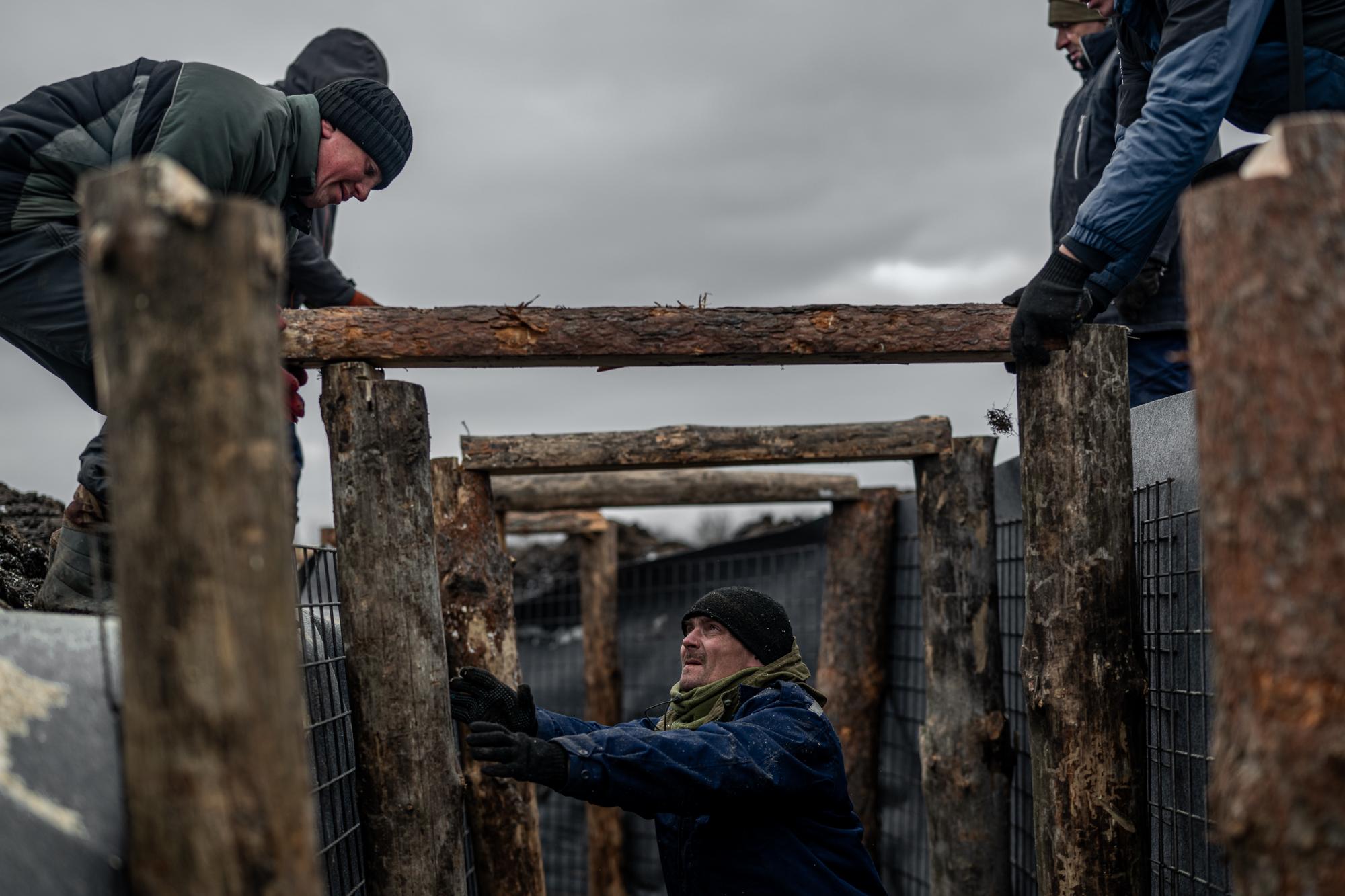
Photo: fortifications are being reinforced in Ukraine (mil.gov.ua)
As reported by The New York Times, the Russian pace is slowing down because they have to advance under fire from the Ukrainian Armed Forces from dominant heights. In addition, signs of exhaustion are evident among the units that have been storming Avdiivka for several months. Former Chief of the Press Service of the General Staff of the Armed Forces of Ukraine, Colonel Vladyslav Seleznov, is not as optimistic in his assessments.
"In the Tonenke area, for example, the situation is extremely difficult, at a crisis level. The situation is the same in the Berdychiv area. Whether we can hold them in the Orlivka area, no one can say. Because the enemy still has resources, and our positions are quite shaky. It will soon become clear whether we will hold our positions. But to say definitively that we have repelled all attacks and the front west of Avdiivka is stabilized, at least not professionally," he says in an interview with the news agency.
As for other problematic areas, he draws attention to the area south of Maryinka, near Pobieda and Novomykhailivka. It is difficult to conduct defensive battles here, as the occupiers have concentrated considerable force in an attempt to cut off the Vuhledar bulge. But there is no quiet section on the front overall.
"The enemy is pressing in the Kupiansk direction, preparing to advance in the Lyman direction, there are some dynamics in the Robotyne area. Recently, there has been little news from the left bank of the Kherson region, and I am not ready to say whether we still hold our footholds there. Special operations forces are operating on the Kinburn Spit, but these are separate raid actions, not at the operational-tactical level," Seleznov says.
According to Hetman, many points on the front can be considered sore spots, as positions have to be defended against an enemy that surpasses both in numbers and in equipment. In addition to rotation, these can be closed by building defense considering the terrain.
"It doesn't matter how many kilometers to the left, right, forward, or backward this relief is. You can't take defense just by looking at the map and drawing a new line with a ruler. Dominant heights are taken, water obstacles are made to hinder the enemy, to make it as inconvenient for them as possible," he adds.
Ammunition shortage poses risks. Is there a threat of a Russian breakthrough?
Analysts from the Institute for the Study of War (ISW) warn that due to a shortage of ammunition, the Ukrainian defense may become fragile, despite Russia's ongoing creeping offensive. The focus on areas where the enemy is more active creates vulnerability in other places, which the occupiers could exploit for a sudden breakthrough.
"Russia’s theater-wide initiative in Ukraine will likely allow the Russian military command to dynamically reprioritize offensive operations throughout the frontline," they write.
ISW also noted interviews with unnamed Ukrainian commanders by Der Spiegel. They mention concerns about ammunition and equipment shortages, as well as some units being able to hold positions until the Russians strike with full force. General Syrskyi also spoke about the possible threat of a breakthrough, without specifying the area.
"I worked in two brigades where the situation gradually deteriorated, and there was a threat of enemy units advancing into the depth of our combat formations. After a detailed analysis... all necessary decisions were made (for defense in an unnamed area - Ed.)," he reported on Wednesday.
.jpg) Photo: Western analysts believe ammunition problems could lead to a sudden Russian breakthrough (Getty Images)
Photo: Western analysts believe ammunition problems could lead to a sudden Russian breakthrough (Getty Images)
ISW concludes that Ukrainian forces may prioritize the distribution of ammunition to those directions where Russia conducts larger operations. However, as long as Russia holds the initiative, its commanders will determine the place, time, and scale of offensive actions. Therefore, any activation in previously "non-priority areas" could allegedly lead to a rapid breakthrough.
Vladyslav Seleznov agrees that an ammunition shortage poses risks of losing territory.
"But can such risks escalate to the level of a breakthrough over tens of kilometers? Probably not. Because the enemy also loses resources and suffers losses. I think, most likely, the Russians may still achieve certain successes, but on a tactical level, with the advancement of a few hundred meters, maybe a few kilometers, but it's hardly worth talking about a situation of a real breakthrough of the front, like, for example, in September 2022, when we liberated the Kharkiv region," he notes.
Furthermore, he doesn't believe in the possibility of a sudden breakthrough on any of the fronts. According to him, both sides conduct fairly effective reconnaissance in the current war.
"And that means planning major sudden operations is physically impossible now. Any movement by both the Ukrainian Defense Forces and the enemy army will be noticed in advance," the expert emphasizes.
Will the outcome of the war be decided in spring and summer? What to expect in the coming months
Recently, a worrying forecast came from the mouth of the head of European diplomacy, Josep Borrell. After meetings in Washington, he stated that assistance to Ukraine can no longer be delayed, as the outcome of the war will be decided in spring and summer. And he urged U.S. lawmakers to quickly unlock the $60 billion aid package.
"We have to speed up. We have to increase our support, to do more and quicker. That's why we are increasing our industrial defense capacities (in the EU - Ed.). And it is also true for the US... The next months will be decisive," he said.
According to him, many analysts expect a major Russian offensive this summer, and Ukraine cannot wait for the results of the US elections. However, there is no secret in Russia's preparations for even more aggressive actions. President Volodymyr Zelenskyy recently warned about an offensive at the end of May or the beginning of June, recalls Oleksii Hetman. And, of course, it will be the military, not diplomats, who will determine when the outcome of the war will be decided.
"The Russians are not hiding plans to mobilize a large number of people. They are currently finishing the so-called 'young fighter course' for another 100,000 people, who will be involved soon. It was projected to be around June. They are transitioning to military rails, and we need to prepare and do everything to prevent them from achieving success on the front," he notes.

Photo: Head of European diplomacy Josep Borrell believes that the outcome of the war will supposedly be decided in spring and summer (Getty Images)
Ukraine urgently needs the assistance of its partners. However, the full-scale war has been ongoing for the third year, and it's time to understand that no single action will solve all the issues, explains the expert.
"We need powerful defensive fortifications, our own military industry, mobilization, donations, and everyone in the country working towards victory. We literally need everything; it's a comprehensive issue. If there is more weaponry, it will be easier in the summer. If there are more fortifications, too, but fortifications without weapons will not solve anything," he says.
At the beginning of the year, many Western media outlets analyzed the problems of Ukraine's counteroffensive-2023, Western support, the dynamics on the front, and how all this would affect the military year of 2024. The consensus was that Ukraine should go on the defensive to prepare forces for an offensive in 2025. Experts surveyed by RBC-Ukraine previously agreed that this year is a year of defense, not active offensive actions from our side. Last week, Commander of the Ground Forces of the Armed Forces of Ukraine Oleksandr Pavliuk stated that Ukraine plans counterattacks, but all of this fits into the logic of strategic defense.
Ukraine is unlikely to launch an offensive in 2024, as there have been no adequate weapon supplies for several months. And even if allies start providing more active assistance soon, most likely all forces and resources will be thrown into defense and reserve preparation.
"The key element today is building fortifications using all elements from natural-geographic conditions to minefields. The resilience of our strategic defense depends on the implementation of this mission. And under the cover of these processes, there is a lot to work on in creating reserves of strategic level for future offensives. There is a lot of work ahead," believes Vladyslav Seleznov.
How will the raid by the Russian Volunteer Corps and other groups end, and will Russia deploy troops to Belgorod?
This week also marks a raid on Russian territory, which has been ongoing for the fourth day. Battles are taking place in the border zone in the areas of Shebekino, Nekhoteyevka, and in the Grayvoron district of the Belgorod region, as well as in Tetkino of the Kursk region. The Russian Volunteer Corps (RVC), the Siberian Battalion, the Freedom of Russia Legion, and presumably some other units are gradually advancing, urging the local population to evacuate and announcing massive strikes on military targets. The Russian Ministry of Defense fantasizes about a landing of Ukrainian paratroopers and says that large losses were allegedly inflicted on the partisans.
Today, Belgorod was under heavy shelling, with fires in the city, hits on buildings, and many cars destroyed. Eyewitnesses are posting photos of the aftermath of the attacks. Schools, universities, museums, and shopping centers in the city are closed. Election polling stations were suspended due to air raid alerts. It should be noted that the breach of the border is occurring against the backdrop of the so-called presidential elections in Russia.
Due to the shelling of schools since Wednesday, classes have been moved to remote learning, including in the neighboring Kursk region. Sirens are periodically sounding in Kursk. Despite the authorities reporting the alleged defeat of the saboteurs, life in the two regions is practically paralyzed.
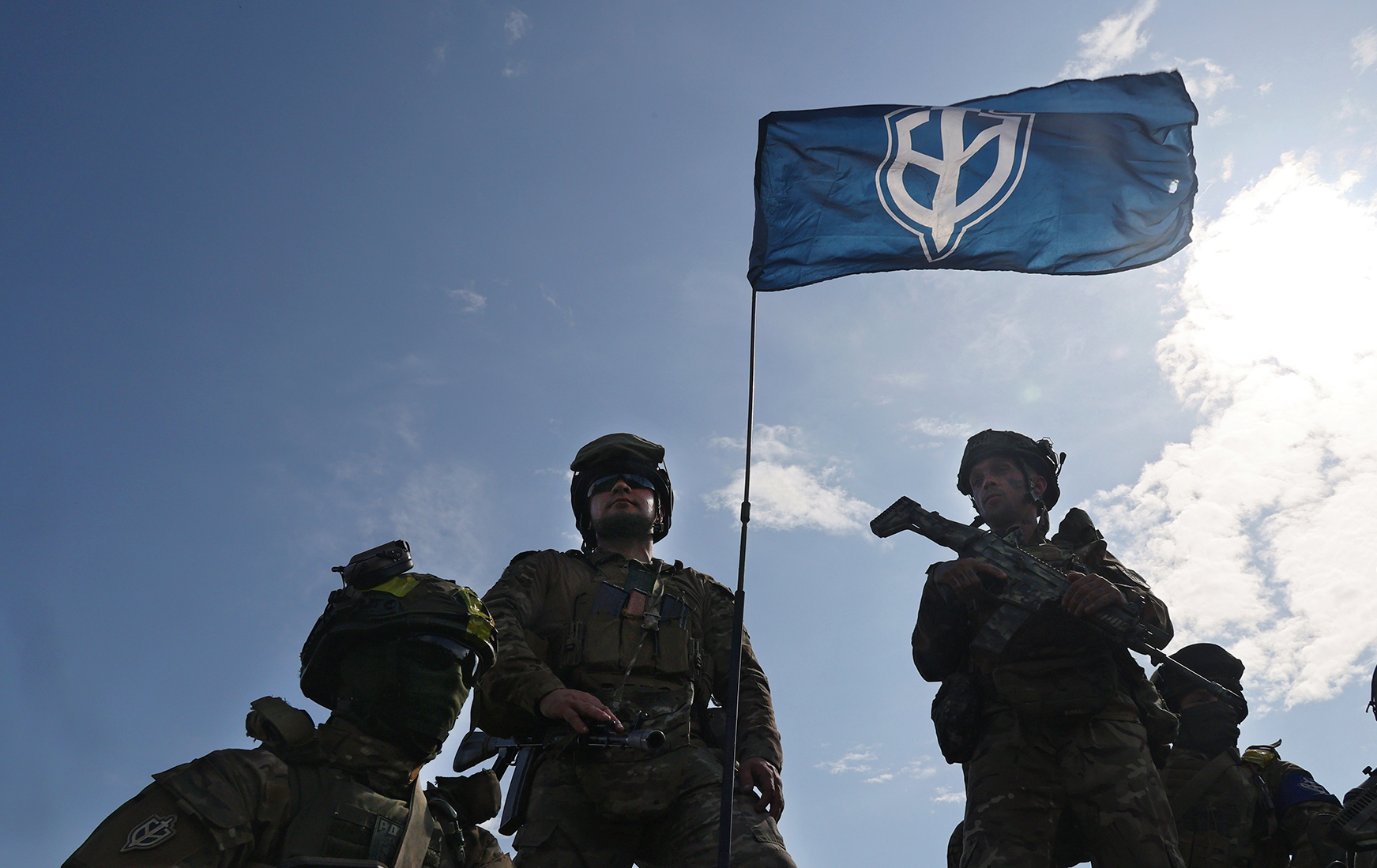 Photo: Russian volunteer battalions conducting a raid in the Belgorod and Kursk regions (Getty Images)
Photo: Russian volunteer battalions conducting a raid in the Belgorod and Kursk regions (Getty Images)
The volunteers themselves call it a limited military operation. However, according to Seleznov, it would be more appropriate to call it an information-power operation.
"Most likely, all the activities of opposition-minded units, consisting exclusively of Russian citizens, will be completed after 'Putin's elections.' Its task is to draw attention to the armed resistance to the Putin regime. But the resources are incomparable; the Russians have many personnel, equipment, and there is an aviation component. Notice, they effectively level some settlements to the ground to destroy the volunteers," he notes.
He also predicts that the partisans will not be able to hold out for long in the border zone and will return to Ukraine within a few days. As for whether a breakthrough of the border could force the occupiers to withdraw some troops from the front and transfer them to Belgorod, this option is excluded.
"According to various estimates, from 23,000 to 27,000 Russian military personnel are located in the territories of the Kursk and Belgorod regions. These resources are sufficient to prevent the RVC units from achieving tactical success," the expert adds.
There are also no signs yet that Russia is deploying forces to the border with the Kharkiv region in response. This was stated by the head of the Kharkiv Regional Military Administration, Oleh Syniehubov, a few days ago. Meanwhile, the enemy has increased the frequency of attacks on our border regions. Only in the Sumy region, 800 explosions were heard in two days, according to the head of the local military administration head, Volodymyr Artiukh, which is "a half-year norm."
The day before, the Russians also attacked radio-technical objects, disabling transmitters in Sumy, Shostka, Bilopillia, and Trostianets, resulting in problems with television, radio, and mobile communication signals. The television infrastructure of the Kharkiv region was also attacked.
According to Seleznov, such attacks are a dangerous signal.
"Communication is the nerve not only of the army but also of communications in general. In case of loss of stable communication, the internet, radio, and television signals, this will be a challenge because being in an information vacuum does not allow timely decision-making and implementation," he concludes.
